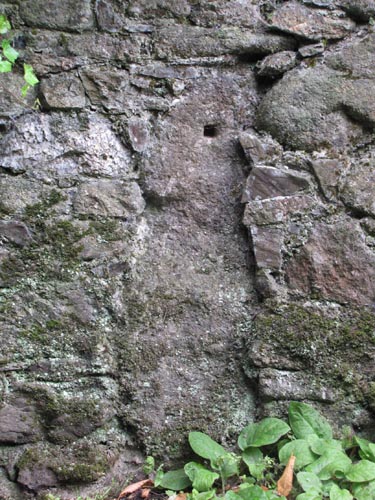 Location:
Built into the wall of
Buckland Court, 25 yards up the road from the pillar beside the main
entrance gate. Location:
Built into the wall of
Buckland Court, 25 yards up the road from the pillar beside the main
entrance gate.O/S Grid Ref: SX/72164/73070 Longitude/Latitude (Degrees+/-): -3.80553/50.54338 Map location: Click here to view map. Purpose: It was originally in use as a Waymarker. Size: 3 feet 7 inches (1.09 metres) tall. The exposed area across the arms measures 12 inches (30 metres). However, as the distance from the edge of the outside arm to the centre of the cross is 8 inches (0.20 metres), it must be assumed that the full width across the arms is 16 inches (0.40 metres). Information: This is obviously a really
ancient and crudely fashioned cross. Its shape is very irregular, even
more so than Bennetís Cross. Although it This is another cross that has been used as a gatepost at some point in its history, as can be seen by the square hole in its face that would have accommodated the hinge. The rusted remains of the second hinge can still be seen at the bottom of the cross. The manor of Buckland-in-the-Moor
dates from Saxon times and was sold to the Bastard's of Kitley Manor,
Yealmpton, in 1614, although the family also remained as owners of Kitley
Manor. The estate was passed down through the family to Edmund
Pollexfen who was born in 1784. He went on to become MP for Devon
and was responsible for setting up a number of boundary stones on
|